#White House Historical Association
Text
24 Days of La Fayette - Day 1
This year’s calendar will be about portraits of La Fayette, thanks to the idea of @my-deer-friend!
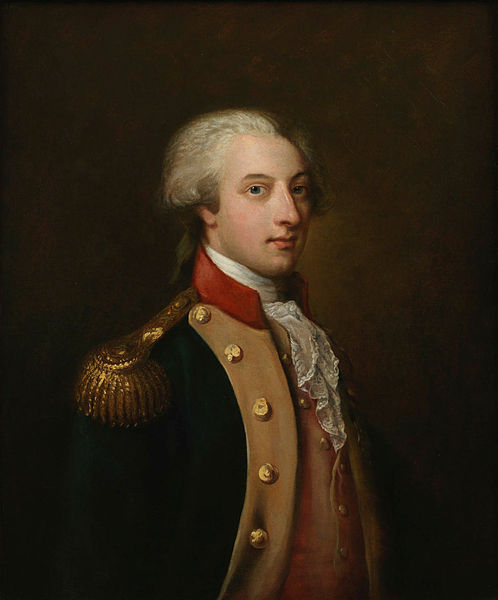
The portrait (1) hangs in the Blair House, just across the White House and Lafayette Square. The Blair House is often referred to as the President’s Guesthouse and is the accommodation for former US presidents and foreign dignitaries. The portrait hangs in the entrance hall and is the first piece of art that a visitor sees.To quote the White House Historical Association (2):
The framed piece hangs in the Entrance Hall of Blair House and is the first work of art guests observe upon entering the house. This is a fitting location for his painting since Lafayette was the nation’s guest and Blair House serves as the President’s guesthouse for today’s visiting heads of state.
The portrait is part of the collection of the White House Historical Association. The photographer who made the photo that is used today, was Bruce M. White for the White House Historical Association/Blair House. He also included the photo in his book “At Home in the President’s Neighborhood: a Photographic Tour”. According to the digital Library of the White House Historical Association, both the date when the piece was painted, and the artist are unknown. It has been in the possession of the White House Historical Association and hangs in the Blaire House since at least 2016.
This piece is one of my personal favourites and some of long-term followers of this blog might remember that this portrait was for a very long time my profile picture – that’s why we start our calendar with the portrait that is today known as The Nation’s Guest. It is subtle, almost calming, and, at least from my point of view, quite a good representation of La Fayette. There is not much in terms of politics or symbolism going on as with many other of La Fayette portraits. He simply sits there and looks the viewer straight into the eyes. He is still young but without looking like a little boy - for me the portrait is simply the perfect combination of many different elements.
(1) https://library.whitehousehistory.org/fotoweb/archives/5017-Digital-Library/Main%20Index/Blair%20House/1113205.jpg.info (01/12/2023)
(2) https://www.whitehousehistory.org/photos/the-nations-guest-photo-1 (12/01/2023)
#24 days of la fayette#advent calender#my-deer-friend#marquis de lafayette#la fayette#french history#american history#history#art#white house historical association#blair house#bruce m white#the nation's guest
38 notes
·
View notes
Note
I was telling someone about the white house renovation during the Truman years and how they completely gutted the interior structure using David McCullough's Truman biography as my primary source - do you have anything more specific about the white house renovations and the condition of the White House prior to its upgrade?
There was a GREAT website called whitehousemuseum.org with tons of awesome photos and history, but it sadly seems to have closed down a few months ago.
However, the White House Historical Association has a pretty solid website, too, and they frequently post in-depth stories and photos from their archives. Here's their section on the Truman Restoration -- I haven't gone through it thoroughly, but it looks like they have some really great photo galleries on there. And the WHHA usually has interesting related links on their stories, as well.
#White House#White House History#History#White House Historical Association#Harry S. Truman#President Truman#Truman Administration#Truman Restoration#White House Restoration
23 notes
·
View notes
Text
“U.S. President Joe Biden issued a memorandum on Thursday requiring allies who receive military aid from the U.S. to provide ‘credible and reliable written assurances’ of their adherence to international law including international human rights law,” the Times of Israel reported. Israel will need to supply written assurances within 45 days or risk loss of aid. The report added, “The memo did not mention specific countries who would be held up to the new standard, but came amid increasing calls in the U.S. to condition aid to Israel due to concerns over its military operations in Gaza which were triggered by the Oct. 7 attacks, in which Hamas terrorists murdered some 1,200 people, mostly civilians, and kidnapped 253.”
No one should underestimate the impact of the decision. The Associated Press explained, “Democratic senators on Friday called Biden’s directive — meant to bring breadth, oversight, deadlines and teeth to efforts to ensure foreign governments don’t use U.S. military aid against civilians — historic.”
[.......]
Biden also pressed on with intense one-on-one diplomacy. After his comment on Thursday evening that Israel had been “over the top” in Gaza, Biden engaged with Netanyahu on Sunday in a 45-minute conversation — unusually long by most diplomatic standards (and even more so given that no time had to be spent on translation with English-fluent Netanyahu). According to the White House readout, Biden insisted Israel make “credible” arrangements to protect civilians before launching a widely criticized military plan for Rafah, where civilian casualties could mount. He also pressed Netanyahu again to increase humanitarian aid to the Palestinians.
Biden’s patient approach with Netanyahu over months has gradually transformed into a private and public pressure campaign. A Biden official told The Post that the leaders had “a pretty detailed back and forth on that.”
-- Biden delivers tough love, takes historic step: Conditioning aid to Israel
Meanwhile Trump?
Trump has said he would implement travel bans on people from certain countries or with certain ideologies, expanding on a policy upheld by the Supreme Court in 2018.
Trump previewed some parts of the world that could be subjected to a renewed travel ban in a mid-October speech, pledging to restrict people from the Gaza Strip, Libya, Somalia, Syria, Yemen and "anywhere else that threatens our security."
During the speech, Trump focused on the conflict in Gaza, saying he would bar the entry of immigrants who support the Islamist militant group Hamas and send deportation officers to pro-Hamas protests.
Also: Trump vows to expand Muslim ban and bar Gaza refugees if he wins presidency
Really, really not sure how much clearer I can make it here for y'all, but sure. Something something Trump's actually a better choice on this issue/overall (sarcasm).
#politics for ts#israel hamas war#i mean#i know this argument is nonsense#but sometimes you look at it and feel compelled to point out just how much nonsense it is
2K notes
·
View notes
Text
Trafalgar Law and Faith
Pre-emptive warning this is going to be another LONG metapost/analysis. There’s a lot I could talk about here but for the sake of structure I’m going to split this into three sections, i.e. the main ‘faith transitions’ that Law has gone through in the narrative thus far: 1. Flevance (catalyst for loss of religious faith), 2. Corasan (martyr that figuratively and literally saves law by giving him something to live for, introducing the will of D.), and 3. Luffy (cementing faith in this new belief system and regaining trust in the goodness of humanity through the living embodiment of everything Corasan believed in).
Before we get into all that though, let’s establish that Christianity is a thing in one piece. Speedrunning through some visual examples that come to mind; the Flevance church and nun (holding a celtic cross - censored in the anime version), a nun literally praying to God right before Marineford, Vinsmoke Sora’s grave marked with a cross (is op Christianity a northern thing?), Usopp and Chopper having crucifixes and holy water whenever ghostly stuff is brought up, Kuma and his trusty bible, the religious symbols on Kikoku’s hilt (could instead be more a reference to the Red Cross/symbol of humanitarian and medical aid as a doctor) and especially in whatever Mihawk’s got going on (though this could just be a Japanese cultural thing with Christianity being a minority religion or Oda just finding that some of the iconography, y’know. looks cool). There are also many other references to other religions e.g. hinduism, shintoism, buddhism, etc. Whether op forms of religion are the same as the real-world ones is debatable, and yes, Law being canonically raised as a devout catholic schoolboy with all the religious trauma associated with that is comical, but let’s take it all unironically for a hot minute. For fun.
1. Flevance
Law’s birthplace (Flevance) is described as being, at one point, “a very wealthy country with an unearthly beauty about it, with pure white soil and plants, like some kind of snow kingdom in a fairy tale.” The country’s wealth came from the very bedrock it sits on — white lead, which could be used to make various high quality products like tableware, cosmetics, weapons etc. When the wider world heard about this everyone wanted a piece of Flevance (the World Government also getting involved with distribution), and very quickly white lead became a “bottomless well of money”. So, hooray. Law gets to grow up in a rich city in a big house with educated doctor parents and probably gets to go to private school on weekdays and festivals with his family on weekends. One problem. In their greed, the Government and royalty have been knowingly hiding the truth about this supposed goldmine from the beginning. White lead is a toxic poison. Mining it from the ground over the last century and putting it in so many everyday products has resulted in it accumulating in the citizens’ bodies and leading to amber lead sickness, shortening their life-span with each successive generation – with the children of Law’s generation fated to die out before they reach adulthood.
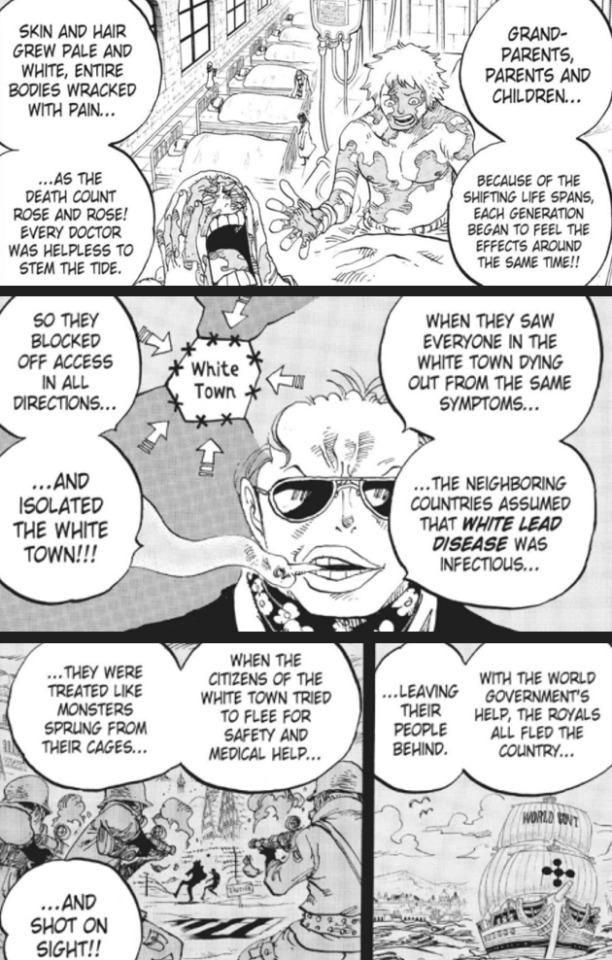

In the bible (especially in the old testament), God often inflicted these insanely disastrous events upon humanity, usually as some kind of punishment for their wrongdoings or as a test of their faith. Some events of which include (but are not limited to): famine, outbreaks of disease and natural disasters (e.g. hail, wildfire, earthquakes, floods). Historically, these stories played a key role in how humanity interpreted meaning from horrible disasters (e.g. assuming bubonic plague was sent as a punishment by god). Fire imagery is very common among these disasters as a representation for hell, which is clearly reflected in the destruction of Flevance.


Sometimes these disasters had sole survivors act as messengers for God. With that context, let’s put ourselves back in the shoes of a ten-year old Law. Raised religious, freshly traumatised from losing his home, his devout family, all the comforts of his life, and having the outside world completely abandon him, this kind of event is likely going to be processed as some form of divine punishment. Law stumbles through hell, finds all his dead classmates, and the last words of sister nun echo through to him here. Merciful and salvation are huge catholic buzzwords – promises of holy compassion, deliverance and hope – and all of it fire and smoke and riddled with bullet holes before him. A genocide funded, perpetuated and covered up by the same body Law was promised was there to save them. And the only reason Law hadn’t died with them was because he wanted to stay with his little sister Lami, who was on her deathbed, and his parents, who were themselves trying to help the afflicted citizens, Law’s own father (before he was shot and killed alongside his mother) begging for more doctors, fresh blood, anything the world can offer, and asking “Why doesn’t the government announce to everyone that white lead is not infectious?”
Oftentimes (and in the case of Law), when there’s a promise of heavenly intervention or some miracle that doesn’t follow through, it results in an ultimate feeling of betrayal and anger. Unfortunately a lot of Catholic teachings also use a lot of guilt, essentially teaching people that the bad things that happen to you are your fault and there needs to be some sort of penance (queue Law’s survivor’s guilt that carries on down the road). But also, if this was supposed to be some divine punishment, for what exactly? For the town being blinded by the incredible wealth they were sitting on? Being lied to? Continuing to extract their livelihood, ignorant of its dangers? Punishment for who? His parents? His innocent little sister? For ten year-old Law? These people who believed in God, who were good people? That’s fucking stupid. None of these people suffered and died for any reason at all — certainly not for a sacred one. God hadn’t saved a single one of them. Law had to crawl out of hell himself by sneaking over the border under a mound of corpses.
Given everything that happened here, Law has every reason to fall into nihilism, and you can see how his upbringing would’ve bred a lot of the feelings of guilt, anger and resentment that you still see in Law (which would suggest that though this is where he likely cuts ties with the religious/Catholic component of his faith, growing up with these teachings in his formative years would definitely influence underlying beliefs about how the world works, and how Law behaves and subconsciously processes information), but at the same time, there’s usually some form of redemption and changes to how these patterns of behaviour can be approached later down the line.
2. Corasan
Fresh off witnessing his whole world burning down around him, Law meets Corazon at the very bottom of this pit of self-destructive rage and unprocessed grief. Rosinante himself mentions to Sengoku that the hatred in Law at this time reminded him of his brother, but beyond the anger, harsh pessimism, vengefulness, I think you have to reach to find similarities between them. You can see some fragments of Doffy in Law down the line at times, with Law seeming to enjoy violence (especially against the navy, but given what they did to Flevance, it’s some well-deserved retribution for Law imo), but I’m not so sure it’s the cruelty so much as it is the high he gets off his own flavour of justice. Doctor’s Hippocratic oath maybe, but never once does Law like seeing others die (even at this point, he’s in tears next to a dead body, even though he’s the one holding the knife), and later on in Wano he makes it explicitly clear to Zoro that he’d rather see the mission fail than have any of them end up dead.
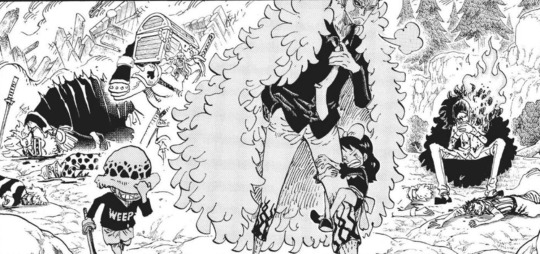
Little Law wanted to destroy the world and everything in it, but thinking rationally, what other choice did this kid have? He had no remaining family, was doomed to die before he hit puberty due to a terminal illness, was perceived as an infectious subhuman that most doctors would’ve sooner tried to exterminate than help. To Law, the world had turned its back on him – considering him a monster for simply surviving. He has all this hatred and pain boiling away with him with no tangible target to direct it towards. And this is the first clear cut rejection of faith that we see in Law. Any concept of a merciful God had just died. What God would allow this? Why is Law alive (a question that he repeats to himself throughout his life), why are these scumbags alive, why is the world going on spinning as if nothing has happened when his whole world had gone up in flames, why does anyone at all get to be here when everything I loved is gone? And it’s far easier to fall into a despondent nihilistic stupor than it is to work through any of that, and what’s the point in trying to process and move on from it, when there’s no hope for a future for Law anyway? When the only thing waiting ahead is more pain? What was this, if not a punishment? He’s supposed to be some messenger for God? How about fuck God, or whatever entity that exists that made him suffer this. Law’s not going to be a messenger for shit, thanks, he’d rather be their monster, he’d rather watch the world burn.

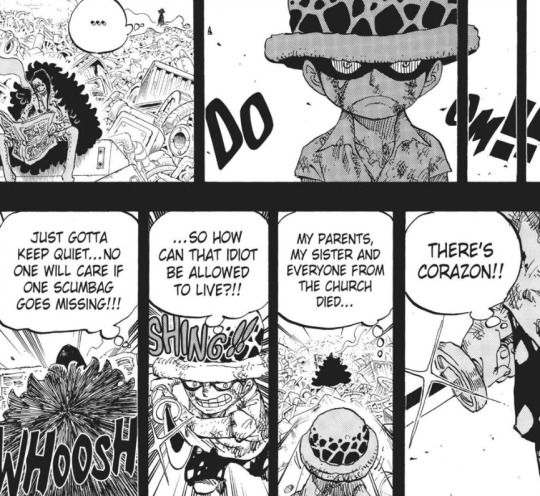
Corazon survives Law’s stabbing and doesn’t rat the little shit out (to Law’s confusion). It’s business as usual for another two years, then, one day Rosinante overhears his true name - Trafalgar “D” Water Law, and everything changes. On the back of his own beliefs, Rosinante dedicates himself to making sure Law a) lives and b) doesn’t become his brother. Law’s relatively short six month stint with Corasan forms the basis of Law’s new creed going forward, and all it took was a bit of kindness, love and humanity when the rest of the world had abandoned him. In the end Rosinante doesn’t save Law for the will of D. and the storm he’s predicted to bring in the future (as Law suspects), but he certainly believes in it, and the strength of Corasan’s conviction transfers right over to Law when he forces the ope ope fruit down the kid’s throat to heal him, tells Law he loves him, then sacrifices himself to set Law free.





Law clings to that love he was given, he takes all these fundamental teachings and ways of thinking in regards to faith that were drilled into him during his youth, rejects the religion element and applies just about everything else to Corasan. He holds onto the last shreds of what Corasan leaves him with. Corasan becomes his “benefactor” (he gave my my heart), his saviour, his martyr.
And the crazy thing is, Rosinante was never really this saint Law makes him out to be. Law hated the clutz when they first met (mostly on account of Corazon throwing him through a glass window down at least two stories and into a pile of scrap). Corazon initially showed nothing but contempt for his presence (to ward him and the other children away from the Donquixote family, but these are still extreme measures). And it wasn’t until after learning Law’s name that Rosinante dragged him kicking, crying and screaming from hospital to burning hospital (not very saintlike in of itself), even after Law begged him to stop. Rosinante became Law’s saviour partly because of his belief in the will of D., and probably due to some guilt being a Donquixote, but mostly because he has always had a bleeding heart and he pitied (and had very quickly come to love) this angry, sick, deeply lost little kid. All this to say that Law’s faith in Corasan – this saintlike figure Law upholds him as in the future and the lengths he’s willing to go to avenge him/fulfil Rosinante’s purpose reflects the strength of the absolute beliefs Law would’ve been raised with in regards to God.
Whether it be out of survivor’s guilt (just one more body to heap on top of the Flevance pile), his love for Corasan, or for the sake of taking vengeance on the man that took away the one good thing he’d been able to regain in his miserable life, Law adopts Corasan’s will, the will of D. (which in of itself seems divine in nature), incorporates it into his new belief system, actively takes on the role of the divine punisher/justiciar and dedicates his life to bringing down Doflamingo.
3. Luffy
Catholicism dictates that the entirety of someone’s beliefs should be dedicated to one true cause (that cause being God) and expects people to ride on that, letting it carry them through life, give them hope, purpose, etc. But a lot of former Catholics choose instead to find that through something else. Corasan ignited the spark in Law’s faith around the will of D., but it’s not until he meets Luffy that this really becomes something that feels tangible and real for Law.
When Law saved Luffy in Marineford (putting the heart crew in danger for a stranger he met once), he said he did so “on a whim”, but that seems incredibly ooc for Law — this man that pretty much planned out how the rest of his life would go after the dust of Corasan’s death settled and he came to terms with the fact he wasn’t going to die at age thirteen like he’d originally thought. Circling back to the concept of Law being a sole survivor/messenger for God, it is interesting that Law is the one to seek out Luffy (given that Luffy is usually always the one either being abandoned by people or recruiting his crewmates), and Law is ultimately the catalyst for pulling him towards Dressrosa and Wano. There must be a REASON that led to Law deciding Luffy to be the most viable option out of the Worst Generation for an alliance (beyond blind trust in an unhinged captain that just so happens to also bear the initial D, and Luffy being one of the few captains crazy enough to go along with what Law was cooking up).
Law undoubtedly would’ve kept a peripheral eye on Luffy for some time before officially meeting him due to him being a rising competitor pirate and another “D” (I imagine the news of his utterly insane exploits would’ve made good reading material, too). The first time Law lays eyes on Luffy in Sabaody though, he still blows all expectations out of the water — crashing headfirst into the crowd of a slave auction and immediately committing a felony against a member of the most powerful upper one percent.
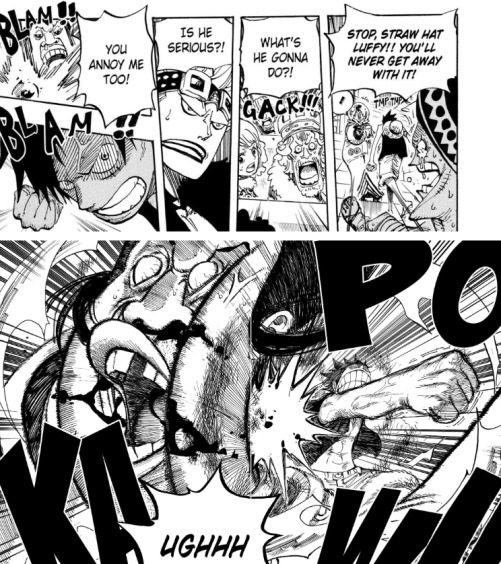

The world nobles are at an “untouchable God” tier in terms of class standing and believe it’s only natural for them to be entitled to whatever and whoever they want in this world that’s beneath them – the same kind of self-aggrandizing false divinity that Law has a a lot of repressed rage towards and that the will of D. is fated to oppose, so this, understandably, is a highly compelling first encounter, but it’s really only an initiating factor for what ultimately draws Law to Luffy. From their very first meeting (and probably before then, in the news stories and rumours Law likely picked up on), it’s made abundantly clear that Luffy does what he wants without a second’s hesitation, no matter the consequences, simply because he feels it is the right thing to do. Some call this an iron will, Law would be more inclined to call it willful stupidity and trouble, but time after time Luffy somehow manages to pull off what Law would best describe as “miracles”. And Law believes the straw hats just might be the ones to drum up another one for him.
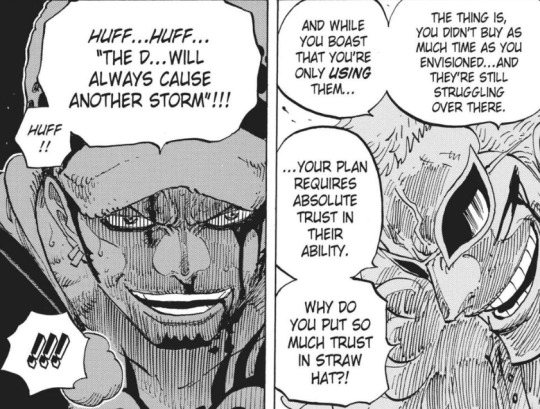
Luffy’s also got a lot of passing resemblances to Corasan going for him, e.g. inherently kind, compassionate liberators with big dumb hearts and wide goofy smiles in spite of everything they’ve been through, treating Law as nakama and saving his life despite his protests etc. All of which I’m sure Law hasn’t been completely unaffected by despite the high walls he puts up. And the more Law learned about Luffy the more it probably became clear that he is the antithesis to Doflamingo, i.e. what makes Luffy so goddamn dangerous and terrifying beyond his physical power is his ability to make friends with a simple kind of unconditional love that gets reciprocated enough so that these friends are willing to die for him.
Luffy agrees to the alliance, they successfully blow up Caesar’s base, and head off to Dressrosa. Now’s the time I should bring up that it’s taught in Catholicism that self sacrifice is the ultimate heavenly deed, and here Law is undoubtedly prepared to be a martyr for his cause. Law sends away his crew to Zou before Punk Hazard with the expectations that he’d never see them. He cultivates a fierce emotional detachment against Luffy’s willingness to bring him into the fold of the straw hats, and is resolute in that when the time comes, he will handle this himself, he will carry out Corasan’s will, and if he has to die for it, he will die with Corazon’s name plastered on his back. (Note here that Christianity is contradictory in that Law being this ready to die here is a sin, because revenge and suicide are highly discouraged, so you could say that by avenging and dying for his saviour, Law would be committing both the ultimate sacrifice and the ultimate sin).
Things get very dicey for Law in Dressrosa, to put it lightly. Doflamingo reveals that he was a celestial dragon (linking back into the will of D. “enemy of the Gods” notion), puts Law on the backfoot and gives him a thorough beating before shooting Law with a couple dozen white lead bullets in front of Luffy (because even when he’s winning Doffy loves to be a cunt about it). By the time Doflamingo is cuffing Law to the heart seat, it’s all looking pretty grim, and it’s very apparent when Luffy shows up to save him, that he is ready to die.

Law here has given up. He spent years planning his revenge for Corasan, but he lost, and he has very little left in the tank (physically, emotionally, spiritually). But Luffy doesn’t listen. Luffy who doesn’t think, doesn’t care, who trampled all over Law’s carefully laid out plan from the get-go and who is willing to take on Doflamingo single handedly for the simple slight that he dared to harm Luffy’s friend Law. Law will never find peace in his own demise because Luffy doesn’t do peaceful. He does loud and unashamed and open with no rhyme or reason other than the excruciatingly simply fact that he loves people and he thinks the people he loves deserve to have good lives. Luffy chucks Law over his shoulder and drags an injured Law across the city despite his protests (sound familiar?) and in the process inspires the fighting spirit in Law again.

When Law confronts Doflamingo again with Luffy in tow, Law’s faith in Luffy confounds him. The last Doflamingo remembers of Law is this beautifully moldable dark pit of grief and rage who’d given up on believing, period – who wanted the world destroyed. Not so long ago, Law had been a candidate for Doflamingo’s next protégé. Now?

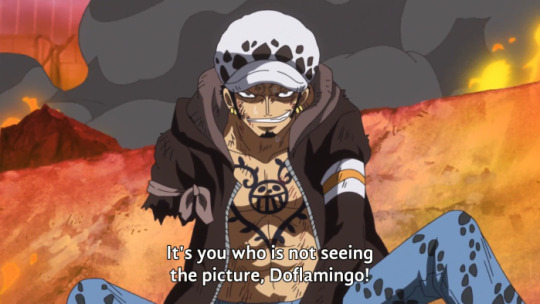

THIS is the action (grinning, staring down the barrel of a gun, flipping Doffy off as he tells him in not so many words that he may kill Law but he will never beat Luffy), Law’s unshakeable faith in the face of his own death is what has Doflamingo realising he will never regain control of Law again – is what incites Doflamingo to go from breaking Law down so he can build him back up again, to conceding defeat and outright killing him.
The trust that Luffy inspires in Law and the way he talks about Luffy (Luffy being this powerful, miracle-inducing liberator that Law can’t comprehend but follows anyway, Law laying down his hopes on him, weaponizing the will of D. to try and provoke fear from Doffy), is very reminiscent of the awe and faith talked about in scripture. Law discovers the feelings of comfort and hope that Catholicism was supposed to give him in Luffy, but Law’s belief in Luffy is a direct rejection of those teachings. Rejection by believing in a real life person as opposed to the divinity he was taught about. He’s also cementing his belief in the will of D., thus rejecting Doflamingo and all the people that embody the sort of “all powerful” divinity that he abhors (i.e. celestial dragons, Kaido, the Gorōsei/five elders) for the embodiment of hope and humanity.

When Law survives (again), he expresses he’d rather see Luffy beat Doflamingo with his own eyes or die with Luffy if he loses than leave. Then he watches, after all this talk of miracles, looking up in reverence as Luffy delivers, bright as the sun, haloed by the bars of a cage that’s haunted him for over a decade, Corasan’s words echoing at the back of his mind. God had never saved or freed Law, but Corasan was there for him, the heart crew was there, Luffy was there. And this is Law’s biggest, clearest rejection of religion – this newfound faith in humanity.
This faith in Luffy is put to the test again in Wano when Luffy is struck down by Kaido, but Law never truly stops believing that he’ll make a comeback. Even when the straw hats doubt whether he’s alive or not, something tells him Luffy’s not dead, and he holds onto that hope.
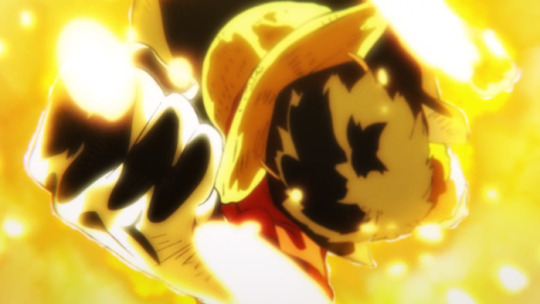


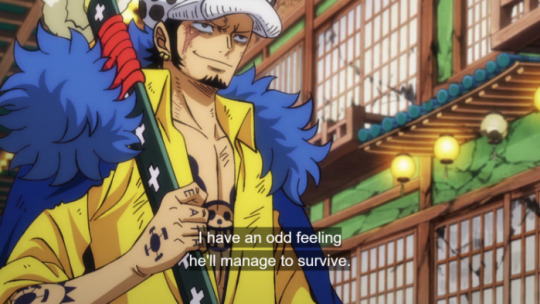
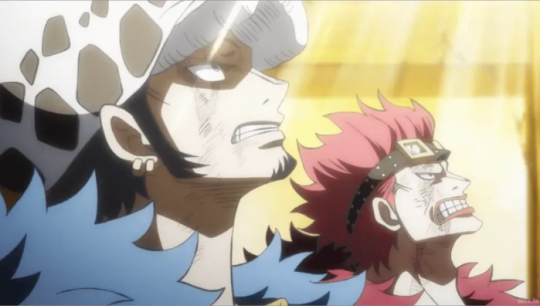



We also have the whole nika/joyboy backstory which really only reinforces all of this imagery/god-fearing looks of awe from Law and this idea of Luffy who is this perfect juxtaposition of empathetic and kind to incredibly fearsome fire and brimstone fighter. And regardless of whether you’re into the ship or not this is the impetus of Law’s relationship with Luffy for me, because here’s Luffy who has every right to have a chip on his shoulder and be downtrodden about all the injustices against him, here’s this little guy who against all odds, in the darkest of places, embodies light and hope and kindness and proves to Law that there will be hard times but there IS a happy ending at the end of the tunnel, despite it all. And everytime Luffy rises to the insurmountable challenge and wins, it just further cements that the will of D. is alive, that Corasan was right, that there's something redeemable in Law, a reason why he was worth saving, even if Law doesn’t understand it quite yet.
#merry christmas law religious trauma be upon ye#what’s an endearing idiot to a non-believer#long post#favourite character thesis statement. or something#ive been wanting to talk about this for a while but just been gathering my thoughts#will preface all this by saying I was not born or raised religious but the concept’s all very compelling from an outsider’s perspective#but I have had conversations about this to people like lesbianluffy who *were* raised catholic and relate to this experience#who I have to thank a lot for helping me wrap my head around this#this is a compilation of thoughts and conversations over the last two or so months#one piece#op#CJ's op watch-through#trafalgar law#monkey d. luffy#donquixote rosinante#donquixote corazon#monkey d luffy#lawlu#trafalgar d water law#gear 5 luffy#sun god nika#wano spoilers#lulaw#op meta#op analysis#one piece analysis
356 notes
·
View notes
Text

My first encounter with the zine/chapbook/booklet format was with these cool booklets you could get at Revolutionary War sites in New Jersey, which would have short stories or historical essays in them, perhaps accompanied with some art or a map (gee, if that doesn’t sound like an RPG zine, dang). My second encounter was a near simultaneous one-two punch — Pagan Publishing’s Unspeakable Oath, and Necronomicon Press’ gorgeous line of weird fiction chapbooks. Looking at the latter today (and you’ll see all of the former on weekends later this year).
History of the Necronomicon (originally 1980, this is the sixth printing from 1992) is, appropriately, a pretty typical example of the products. This is a facsimile of a short run of booklets produced as a memorial for Lovecraft in 1938, reproducing his bibliographic essay on his most notorious grimoire. S. T. Joshi has a brief historical afterword. The whole thing is printed on heavy stock, with a bright yellow cover adorned with black and white art by Jason Eckhardt (very into the scorpion scarf). A handsome package containing an entertaining piece of writing by a weird fiction author that was otherwise difficult to gain access to (I don’t know of any other places the essay was collected before Arkham House’s Miscellaneous Writings in 1995).
The essay itself is interesting, a great example of how Lovecraft imbued the Necronomicon with a beguiling authenticity through faux-academic writing and reference (it also is a curiously presentation of Lovecraft’s default xenophobia mixed with an abiding love for the Thousand and One Nights, both of which clearly inform the text). The book’s Arabic title is Al Azif supposedly takes its name from the buzzing sound of locusts that was associated with Djinn and whispered revelation (and hence the locusts in Eckhardt’s art). The book of the buzzing. Love that.
#roleplaying game#tabletop rpg#dungeons & dragons#rpg#d&d#ttrpg#Necronomicon Press#Lovecraft#Necronomicon
88 notes
·
View notes
Text
Cabin Fever! How the log cabin shaped American history 🪓
Cabins have long been a symbol of the American frontier spirit, a testament to self-reliance and ingenuity. They played a vital role in the early settlement of the United States and have become an enduring symbol of the nation's pioneering past.

Early Colonial Period
Cabins were an essential form of shelter for European settlers in the 17th and 18th centuries. Built from logs with notched corners, cabins were relatively simple to construct, allowing settlers to establish shelter quickly. This design, known as the log cabin, became synonymous with frontier life.


Abraham Lincoln's Birthplace
One of the most famous cabins in American history is the one where Abraham Lincoln was born on February 12, 1809, in Hardin County, Kentucky. The symbolic importance of Lincoln's log cabin birthplace reflects the "log cabin to White House" narrative that emphasizes his rise from humble beginnings. Though the authenticity of the existing cabin at the Abraham Lincoln Birthplace National Historical Park is disputed, it still stands as a symbol of American perseverance and determination.

Western Expansion
As pioneers moved westward, log cabins continued to play a vital role in American expansion. The log cabin's simplicity made it an ideal choice for settlers needing to build shelter quickly. Many of these cabins became the nucleus of burgeoning communities.

Thoreau's Cabin at Walden Pond
In the 19th century, cabins also began to symbolize a return to nature and simple living. Henry David Thoreau's cabin at Walden Pond, where he lived from 1845 to 1847, became an emblem of deliberate, contemplative living. Thoreau's experiment was not only a personal retreat but also a critique of modern society, and his cabin remains an iconic representation of the American transcendentalist movement.

Presidential Retreats
Cabins have also served as retreats for American presidents. Camp David, officially known as the Naval Support Facility Thurmont, is the country's premier presidential retreat, featuring rustic cabins. It has been used by presidents for rest and diplomatic meetings since Franklin D. Roosevelt's administration.
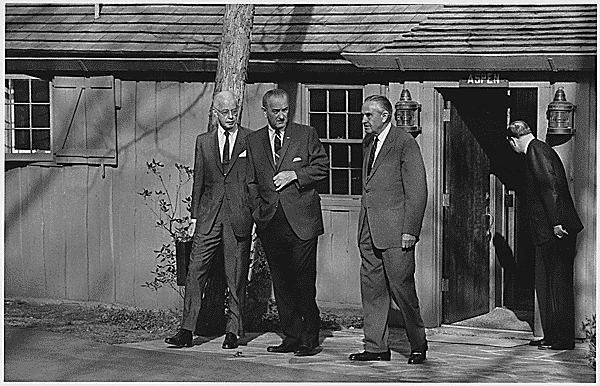

Cabins in Modern Culture
In modern times, cabins continue to symbolize simplicity and a connection to nature. They are often associated with vacation retreats and are emblematic of a desire to return to a less complicated way of life. Check out the hundreds of photographs of cabins in our Catalog!
273 notes
·
View notes
Text
“Although bisexuals have always been part of lesbian and gay movements and communities, they have often not been visible as bisexuals in these groups. Consider, for instance, these little-known historical facts:
A bisexual man was one of the key organizers of the first national March on Washington for Lesbian and Gay Rights in 1979. He also cofounder the National Coalition of Black Lesbians and Gays and led a delegation of black gays to meet with White House staff while Carter was President.
A bisexual Washingtonian was one of the first women to write about living women in the national feminist news journal, off our backs, in 1972.
It was a bisexual man who conceived and spearheaded the successful national “gaycott” of Florida orange juice in response to Anita Bryant’s homophobic “Save Our Children” campaign in Dade County, Florida, in the late 1970s.
A lesbian-identified bisexual ex-suburban housewife ran for Vice President on a bisexual/lesbian/gay civil rights platform during the 1984 Democratic Party convention in San Francisco.
In May 1989, a bisexual veteran from New England, representing the National Gay, Lesbian, and Bisexual Veterans Association, was the first out-of-the-closet veteran invited to testify before Congress on behalf of all lesbian, gay, and bisexual veterans.
But even in these high-profile “out” positions, bisexuals often continued to be perceived as gays and lesbians by both the gay rights movement and the rest of society.”
- Loraine Hutchins, Bisexuality: The Psychology and Politics of an Invisible Minority
100 notes
·
View notes
Text
A social worker turned interior designer is tackling furniture poverty by transforming the homes of social housing tenants through her charity.
Emily Wheeler, founder of Furnishing Futures, says the need for her charity is not just cosmetic design - domestic abuse survivors are often driven back to their perpetrators after being given empty social housing with no beds for their children.
When families escaping domestic violence are rehoused by their local council, properties are often stripped of all white goods, furniture, and flooring for health and safety reasons.
Having left their old homes suddenly without any of their belongings, families often end up in a flat or house with nowhere to cook or store food and no beds to sleep in, Emily Wheeler, founder of the charity Furnishing Futures, tells Sky News.
"There are no curtains at the windows, there's no oven, no fridge, no washing machine," she says. "Children are expected to sleep on concrete floors with no beds or bedding.
"Mothers may have experienced economic abuse or coercion and might not have access to their money and find themselves having to start again.
"So you can understand why some women think 'this is actually no better for my children than going back to my previous situation'."
Emily has been a frontline social worker in east London for more than 20 years. During a career break, during which she had her two children, she retrained as an interior designer.
When she returned to social work in 2014, she says austerity meant council budgets were being cut and previously available grants for social housing tenants were no longer funded.
"I've always seen furniture poverty throughout my career, but it had got worse," she says.
"I was meeting families living in these conditions without furniture and without access to support.
"When you look at the amount of stuff councils have to spend money on just to keep people safe, furniture isn't the priority."
Moved into empty flat two days after giving birth
Laura, not her real name, moved between different emergency accommodations while she was pregnant with her first child after being abused by her ex-partner.
She says she was offered a council flat two days after giving birth.
"When I first moved in it was all dirty, there was no furniture, no carpet, no cooker, fridge, or washing machine.
"I had to take out an emergency loan from Universal Credit to get away from my partner, so I didn't have any money left when my baby was born. The first couple of nights I could only eat takeaway food because there was nothing to cook with.
"It had concrete floors. I'd get up in the middle of the night to make my baby a bottle and it would be freezing, so I had to put blankets all over the floor."
Chief executive of the National Housing Federation Kate Henderson says: "In social housing, carpets have historically been removed as standard practice for practical reasons, to ensure hygiene between lets and to prevent any possible contamination.
"In some cases, housing associations provide new flooring as standard when a home is re-let, or in other cases they may provide decorating vouchers to new tenants, which can be used for flooring of their choice."
According to a 2021 study by the campaign group End Furniture Poverty, only 1% of social housing properties are furnished.
Councils under 'no legal obligation'
The Housing Act 1985 states that a local authority "may fit out, furnish and supply a house provided by them with all requisite furniture, fittings and conveniences".
But Emily says this means there is no legal obligation to do so.
"Councils are fulfilling their duty by providing housing, so in the eyes of the law they're not doing anything wrong.
"But having an empty shell of concrete is not a home - just because you're not on the streets."
Having seen the problem on a wider scale when she began chairing multi-agency child protection conferences, she decided to combine her skills as a designer and social worker - and create a charity to help bridge the gap.
Furnishing Futures was set up in 2019. Emily and her team refloor, paint, and furnish empty properties given to trauma and domestic abuse survivors by councils.
She uses her industry connections, which include Soho House, DFS, Dunelm, and others, to source donated furniture, and fundraises for the rest.
She believes it is the only charity of its kind in the UK.
So far they have furnished more than 80 homes across east London, and a pilot scheme with Waltham Forest council and housing association Peabody will see another three completed there.
But with thousands of families on social housing waiting lists in each of the capital's 32 boroughs alone, she wants to expand nationally.
"The hardest thing about my job is having to say no to people because we don't have the capacity," she says.
"Every day we get inquiries from women, midwives, health visitors, other local authorities, domestic abuse agencies - but we're just a small team and the demand is huge."
The charity has a 4,000-square-foot warehouse, a team of five full-time staff, and a group of regular volunteers who help with flooring, painting, and assembling furniture.
As situations are often urgent, work is usually done in just one day.
Empty homes are form of 'revictimisation'
Jen Cirone, director of services at Solace Women's Aid, one of the charity's partners, says being housed in an empty home and having to start again is a form of "revictimisation".
But she says of the charity: "It's not only the practicalities of having a beautiful space to live in but also demonstrates that others care.
"Together, Furnishing Futures is able to complete the road to recovery that work with Solace has put them on."
Hannah, not her real name, is another of Emily's clients.
She was homeless after leaving her ex-partner and given emergency accommodation a day before she was due to give birth to her first child.
"I felt extremely stressed and vulnerable," she says. "As a victim of domestic violence and heavily pregnant, I already felt alone and unsupported.
"This empty space didn't feel like 'home' and it certainly wasn't suitable for baby."
As a type one diabetic she also had nowhere to store her insulin injections, she adds.
"I ended up staying in hospital for some time due to an emergency C-section and during that time Emily turned my empty, scary space into a home for me and my child."
Emily says that although COVID and the cost-of-living crisis have opened the conversation about poverty and how it affects domestic abuse survivors, the situation is "worse than ever".
"We're not just talking about poverty now, we're talking about destitution," she says.
"People need safe and comfortable homes. You won't be able to recover from trauma, rebuild your life, and be a productive part of society if you don't have your basic needs met."
A Department for Levelling Up, Housing and Communities spokesperson said: "Domestic abuse survivors deserve a safe home and we are grateful to Furnishing Futures for the work they do to help these families rebuild their lives.
"We expect social housing providers to play their part and provide homes that are of a decent quality, if tenants are unhappy, we encourage them to speak to their landlords.
"Our Social Housing Regulation Act is also driving up standards and strengthened the role of the Ombudsman so that it is easier for tenants to raise complaints."
66 notes
·
View notes
Photo
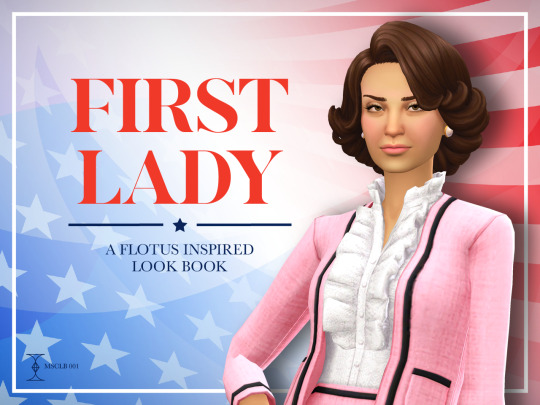





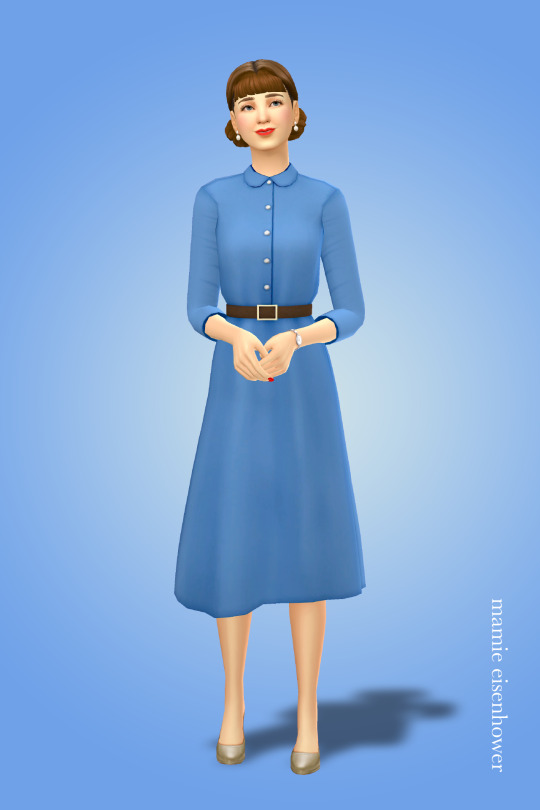
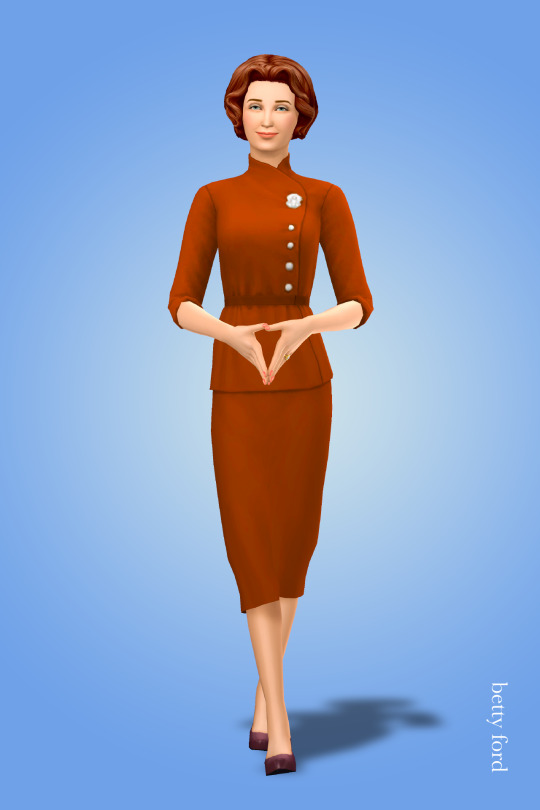

A big happy 4th of July to my American simmers! What better way to celebrate than by creating a look book showcasing some of the most notable and iconic first ladies?
CC links under the cut.
Martha Washington was the first first lady of the United States, although the title wasn’t coined until after her death. She took on the social role of the president's wife reluctantly, becoming a national celebrity in the process.
Mop Cap | Hair | Dress (Recolour) | Dress (Mesh - TSR) | Fichu (Scarf) | Watch (Vintage Glamour)
Louisa Adams was born in London and raised in France. In fact she was the only foreign-born first lady until Melania Trump. While serving she took to writing, producing plays, essays, poems, and an autobiography.
Hair | Earrings | Dress | Undershirt & Shoes | Socks (Get To Work)
Mary Todd Lincoln staunchly supported her husband throughout his presidency and was active in keeping national morale high during the Civil War. She was seated next to Abraham when he was infamously assassinated.
Hair | Earrings | Dress
Frances Cleveland is the only first lady to have served in the role during two non-consecutive terms. At just 21 years old when she first starting serving, she is the youngest presidential spouse in American history and the first to actually marry in the White House.
Hair | Suit (direct download - Marilla’s suit) | Gloves (My Wedding Stories)
Nellie Taft was a very progressive woman for her time and was closely involved in the political aspects of the presidency, regularly sitting in on meetings and serving as her husband's closest advisor.
Hair | Earrings | Choker | Dress | Shoes
Mamie Eisenhower was a popular first lady and recognized as a fashion icon, known for her iconic bangs and frequent use of the colour pink.
Hair | Earrings | Dress | Watch (Vintage Glamour) | Shoes (Base Game)
Jackie Kennedy (header) was regarded as an international fashion icon and her work as a cultural ambassador of the United States made her very popular globally. She established the White House Historical Association, which has had a lasting impact on the cultural landscape of the United States.
Hair (Nifty Knitting) | Earrings (Base Game) | Suit
Betty Ford was one of the most candid first ladies in history, commenting on the hot-button issues of the time such as feminism, equal pay, the Equal Rights Amendment, sex, drugs, and abortion. After undergoing her own recovery, she founded and served as the first chair of the board of directors of the Betty Ford Center for substance abuse and addiction.
Hair | Suit | Ring (My Wedding Stories) | Shoes (Base Game)
Michelle Obama worked as an advocate for poverty awareness, education, nutrition, physical activity, and healthy eating during her time as first lady. She also supported American designers and was considered a fashion icon.
Hair | Necklace | Dress | Shoes (Recolour) | Shoes (Mesh - TSR)
With thanks to some amazing creators: @buzzardly28 @simulatedstyles @rustys-cc @serenity-cc @wondercarlotta @joliebean @madlensims @sentate
#ts4#ts4 cc cas#the sims 4#ts4 lookbook#s4 lookbook#lookbook#the sims lookbook#ts4 decades challenge#ts4 historical#sims 4 decades challenge#1700s#regency#late victorian#edwardian#1950s#1970s#2010s#1800s#historical lookbook#decades lookbook
185 notes
·
View notes
Text
Part 2: Why is the accent? Where and when does Hobie come from?
Part 1: Who, What (London Accents) | Part 3: How (Writing Tips)
In this section, we'll touch on racism since the 70s, black Londoner youth culture and how punk has historically interacted with those things.
To begin, let’s answer the question of what the hell all us black people are doing here in the U.K. 😂
Long story short, after World War II, the U.K. invited subjects of the empire over, in need of help rebuilding the place and doing essential work after getting bombed and stuff. There was further incentive on the subjects’ side to come as many of their men had been sent off for the war but were out of work and not properly compensated upon their return, leading to a poor economy and many people hoping for better in the ‘mother country’. Caribbean people, mostly Jamaicans, came over from then right through the 60s but were not welcomed and treated as British as many of them thought they might be… cause, you know, racism.
In 1962, 1968, 1971 and 1981, legislation was passed that made it incredibly difficult for black Caribbeans to come over, even to this day, which led to the migration of black people shifting to predominantly Africans, mostly West Africans, in the 80s, who would come for education and work purposes mostly. (For context, in the 2020s, there are more African people than Caribbean people in the U.K.). In the 70s and 90s, East Africans fleeing conflict have also immigrated en masse, although the numbers were quite a bit smaller than the West African and black Caribbean diaspora.
[not an expansive breakdown of all ethnicities, I just wanted to talk about the most populous black nationalities for the general gist of where black British life really got on a roll]
So, onto life as a black person in the U.K.
It’s important to remember that the U.K. was racist as fuck AND did not have Jim Crow laws or a history of relegating certain cities or neighbourhoods to ethnic minorities because, by the time we had been invited, there were not so many of us living in England for such laws to be deemed necessary (by racists).
Living literally side by side, often in the same building, with people who wanted to see them brutalized had a big impact on how black British people navigated life back then and has residual cultural effects on how we behave to this day.
One thing that stood out to me was the line where Hobie says he has “a laugh at the pub with the mandem”. As many of you will know, the pub is a large part of general British culture as the main drinking scene. Until more recently, you couldn’t just go and buy alcohol from the supermarket or whatever like you can now, so people had to go to the pub for a drink. Additionally, during times when getting clean water was unreliable due to cholera outbreaks, a drink from the pub was safer than drinking water.
It’s also important to know that, unlike clubs, many pubs sell food and are family-friendly, so while it’s not likely for a little kid to be bouncing to go the pub because it’s just basically like a restaurant to them, it’s a place that a child can be used to going to.
Not only do pubs sell food, but pubs also are places that are mostly used to watch football, as well as play pool, participate in pub quizzes (competitive general knowledge pop quizzes done in teams) and generally be out late to sit and talk.
That being said, as I mentioned before, how black people navigate where we live is different to how white people do.
Whilst many black people will go to the pub with their work colleagues or with their mixed friend groups, pubs generally have never been a haunt for black adolescents.
Instead, black drinking culture is more associated with dance and music, i.e. house parties, clubs (particularly clubs or club nights where music popular amongst the black community is played and, in older times, basement boozers) and lounges. Unlike white counterparts, most black kids will not have grown up going to the pub or around people who went and would not be used to going until they got invited out, likely by workmates.
To this day, although racism has chilled out so much since the mid-20th century, a lot of younger people actually still have a latent fear of facing racism from white football hooligan types and drunk, older white people in pubs. If you went to a pub, you typically wouldn’t see many young black people in there, if any.
The epitome of this mindset was on display during the last World Cup, during which Gen Z black U.K. TikTok was filled with half-jokes about the brutality they would face sitting in the pub to watch an England game if a black team member were to miss a kick or otherwise make a mistake. It was something we joked about in real life too and there was a rumour that went around - which many of us believed to be true - that two black guys had been thrown in the Thames because the black players had missed the penalty kicks they took.
It was just a rumour, however, people did take to racially abusing the players online and, whilst it wasn’t true, you can see what the general attitude towards pubs tends to be and why it’s not a hotspot for black youth.
There are U.K. pubs that historically have had more black patronage in black communities but there’s only a few and they’re not really a thing in London.
Knowing that, it’s not to say that no young black people frequent pubs, but it means that it says something about Hobie that he does (or his world, which we’ll talk about later). What it says exactly is up to your headcanon, but it’s worth noting that it’s not typical for a black teenager in London to hang out at the pub, even if they are rebellious and not concerned by the drinking age.
So you may be thinking, damn, why do pubs have such a reputation? What happened that meant that - to this day - there’s such a divide?
While the U.K. was always racist and was unwelcoming to those who arrived during the Windrush period, it continued to get worse going into the 70s. The increasing popularity of the fascistic political party called the ‘National Front’ saw the rise of ‘the immigrants are taking our jobs’ rhetoric used to appeal to the white working class that persists, to a less extreme, today, such as with the political party UKIP, as well as the English Defense League (EDL), both of which have taken on a more Islamophobic angle than the focused and explicit anti-black & anti-browness of the National Front. The National Front’s supporters would chant and sing stuff like “We’re gonna send the blacks back”.
In daily life, black kids had to deal with shameless racism, bullying and violence from their white peers. There was a ‘sus’ law implemented, which essentially made it so that police could (and very much did) stop and arrest any black person they saw on the street that they felt was ““““suspected person””””, which included unprovable and outrageously ridiculous bullshit like being suspected of ‘loitering with the intent to steal’ (so basically, if you’re black and outside, you were - and still are, especially if you’re young - likely to be suspected of this). As mentioned earlier, there were people who would watch games and get drunk in the pub, then go out into the streets on a destructive rampage would also take those opportunities of chaos to physically assault black and brown people.
All of this was on top of institutional racism and micro-aggressions like we have today but turned up to 10. Minorities didn’t feel safe going around their own city alone for fear of getting mobbed or having rocks thrown at them. Even in their own homes, racists were putting literal shit and bombs in their letterboxes. The popularity of the National Front saw a rise in Nazism - an especially wild expression of racism, considering the Nazis had bombed the fuck out of London in WW2, which was the reason the U.K. went crying to the subjects for help in the first place.
So, naturally, ethnic Londoners tended to craft and operate in their own spaces when it came to leisure, more attuned to the cultures from their family’s countries of origin as well as the kinds where they were just generally more accepted for who they are. Though no longer out of necessity for safety, this aspect of Black British culture persists today, to a lesser extent though, and latent anxieties about acts of extreme racism still remain in the collective subconscious, even though most young people today will have never experienced such extremes.
Just for clarity, this is not to say black people are afraid of white people in general, I’m not sure that could even have been said in the 70s, since there were also plenty of non-racist (aka normal) people too. Back then, the culture was probably a lot more gatekept than it has been for the past few decades, but I’m trying to explain why black British culture and black British life is a different experience to being white British, it’s not only experiencing racism, but it’s also that we just do different stuff cause we historically didn’t feel welcome at their figurative tables and thus did our own thing mostly. It’s why you still get friend groups that are predominantly black despite everyone’s families likely coming from different countries with different cultures, because we relate in terms of black British culture and not feeling especially understood amongst white counterparts. But if white people make us feel like they are down with us, we’re down with them, as one would hope lol.
Speaking of down white people, another huge part of Hobie’s character is that he’s a punk, of course.
So, not gonna lie to you guys, due to the things I just stated about how black people had to navigate the world and craft their own spaces in order to feel comfortable and safe, the punk scene (as we would think of it) has never been a thing that was popular amongst black British people. It’s a predominantly white scene and during the 70s was not unaffected by rising Nazism. To this day, there are still Nazi punks and what we call dirtbag leftists, so you can imagine, at the time, though there were and still are more non-racist white punks, there were enough Nazis that a. it’s not something that seemed welcoming to black people and b. non-racist White punks in the 70s felt that the Nazi problem was bad enough that they needed to do something big about it, which we’ll get onto.
Because we’re not a monolith, of course, there were black punks such as Poly Styrene, the lead singer of X-Ray Spex, and Basement 5, a punk-reggae band (remember this), but other than that, I haven’t been able to find documentation of black punk life in particular, nor have I been able to get any personal accounts from family. Punk is a small-ish scene to begin with, so you can imagine that the black people who participated are very few. Here, I’m not trying to say that few black people enjoyed listening to the music as part of their taste, I’m pretty sure a lot of young people would have liked the music but not necessarily been active in the scene/culture in the way that white counterparts were.
Again, the fact that Hobie is a full-out punk as a black teen says something about him or his world; what in particular, is totally up to interpretation and headcanon, but understand that it’s another unique behaviour.
A similar thing that did include black people was ‘skinhead’ culture, something that emerged from and celebrated the working class, especially Jamaican people, in the 1960s, but it was co-opted by ‘punk’ and white people, then drifted away from its associations with and relevance amongst black people and became most popular amongst Nazis in the 80s, associated with the ‘British Movement’. Most people will think of racist white football hooligan types when they think of skinheads nowadays, even though in reality, for both punks and skinheads, not all people in these subcultures are racist/fascist.
As I mentioned earlier, because minorities were living side by side with working-class white people, a lot of stuff that wasn’t kind of gatekeepy (i.e. super black) has always been at risk of being yanked from us and has historically been done by literal Nazis and I’m sure this plays a part in alternative scenes that stray very far from the cultures we’re raised in not being the most popular amongst us.
Nonetheless, non-racist punks and black people agreed on a lot of core points about classism/capitalism and the need to stomp out racism, which led to white punks starting the Rock Against Racism (RAR) organisation, which held concerts across the country with the intention of bringing people together to take a stand against racism. If you’re able to, I recommend watching the documentary about it called White Riot (2019), which whilst it does include some black interviewees, focuses on the white punks’ side of things and the racism of the time, as opposed to black life. Still worth the watch :)
Other than punk rock, you know what other acts were invited to play at these RAR concerts?
Black musicians who played funk and reggae were also invited. Even though their music taste was different, the message was the same. Additionally, it might surprise non-British people to hear but even white British people have long loved themselves some reggae, hence Bob Marley’s popularity here.
Reggae is a genre that is often used to speak on politics and social issues, it’s why Rastafarians love it and make such music. So, whilst the punk-reggae fusion of Basement 5 might sound strange today when reggae is not as popular as it once was, it makes total sense why. You can also see references to the London punk scene in the 70s (the time he was living in London) in Bob Marley’s song “Punky Reggae Party”.
I mention this to emphasise how the blackness of black British people, even in white space, has not typically proven to give way, that to be punk or believe in such values is not to relinquish all traces of black culture. I also say this to say, as I’ve said in a previous post bouncing off of Daniel Kaluuya’s thoughts on ‘punk’, that people who are adamant Hobie would not listen to genres of music that are popular with or created by predominantly black people alongside the more typical punk rock give off strange vibes. There’s no precedent for a black person to totally give up that part of them that they would’ve grown up with just because they’ve solidified a political view. Of course, some people are less into it than others, as I said earlier, black people are not a monolith, but given all this context, I’m begging people to not post things like ‘Hobie would never listen to [insert black genre here] because he’s a punk! Other people’s headcanons/playlists are stupid and they’re punk posers!’.
You can believe he only listens to genres of rock, and that’s fine, but stop telling black people that their headcanons where they project their more black tastes onto Hobie are inaccurate because they aren’t and it’s very strange to gatekeep interpretations of a black character from blackness in that way.
If you do want to know some genres popular amongst or pioneered by black British people, most of which popped off in the 90s, look to grime (hip hop, electronic), garage (electronic), drum n bass (electronic), jungle (electronic), U.K. drill (hip hop), afroswing (hip hop, r&b), reggae, dancehall (hip hop, reggae), hip hop, funk and r&b. I’d say pop since it’s popular amongst all ethnicities lol but, since Hobie is a punk, you’re gonna wanna exchange that for rock and indie, though I think it’s also fair to think there’s a few pop songs that Hobie would like, since being an anarcho-communist doesn’t mean you can’t have a little fun, idk. Headcanons and stuff are not really what I’m here to share or enforce. Plus, of course, a lot of these genres are anachronistic but, at the same time, I’m pretty sure most people’s playlists feature more modern songs anyway, hell, even the song selected as Hobie’s intro is from 2011.
And none of this is not to downplay Hobie’s love of rock genres either.
I did make a playlist for myself, if anyone wants it or recommendations you can drop an ask 🤓
In the past few years, there’s been a noticeable growth of alternative life in London black youth culture, notably the roller-skating scene, as well as more people participating in more classic takes on alternative culture like goths, punks, etc. and, of course, black nerd culture has been popping since the late 90s. The black people participating in these alternative cultures aren’t relinquishing their blackness, putting hip-hop in the bin and whatnot - people can be multi-faceted.
What I hope you take away from this is that Hobie is a unique and nuanced character, he’s not a typical representation of any of the things he is, which is personally why I love him so much. I also hope you understand that being a black punk in the U.K., before more recent times, would have been a different thing to being a white punk because, not only are you participating in a counter-culture, you’re going outside the safety net and norms of black British culture which has been positioned as inherently counter-cultural anyways and is one you can never hide your associations with or come out of. It says a lot about him, it comes down to headcanon what, but it’s important to recognise that these aspects of him are not a given but things that would have been purposeful developments or huge moments of self-discovery in his life.
Headcanons are something that throws somewhat of a spanner into the works. Everything I’ve said is historically accurate but we also don’t know that Earth-138’s New London would reflect all these aspects of our Earth’s London. Perhaps 138 is written in a race-blind kind of way or, not coming from black British culture, the writers may not envision the world authentically from our point of view and might be unaware of how it’s different; maybe the execs would not allow them to tap into the racist aspect of Nazism and have the writers keep it vague for marketability's sake; hell, maybe the date on the mugshot was just an Easter egg and not a canon-accurate date, who knows?
On top of that, if you headcanon Hobie as a transracial adoptee (meaning adopted by people of another race) or that he was orphaned at a very young age or otherwise not enculturated and socialised as a black boy, maybe none of this applies.
From the current slang to the casting of Daniel Kaluuya, it seems clear to me that, in tandem with the retro vibe, Hobie has been designed to also evoke more contemporary ideas of blackness so the full picture of what the writers have in mind is anyone’s guess at this point.
That being said, I feel like those conclusions would all take some stretching and reaching to come to. I’m not here to tell you what you can and cannot interpret or write, but I’m just trying to give some information so you can write more accurately and understand Hobie and Black Londoner life better.
So, now you understand where we’re coming from, I think you’re ready for the writing advice 😎
129 notes
·
View notes
Text
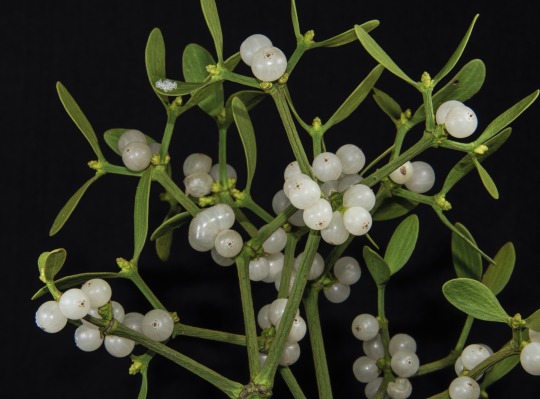
Next in the christmas botanicals series is mistletoe, the famous white-berried tree parasite associated with druids, animal sacrifice, thunder god semen, the death of the Norse god Baldr, and the Trojan hero Aeneas using it to safely travel to the underworld. Many of us may think of mistletoe as belonging solely to the British Isles and Europe, but did you know there are 1500 different species of mistletoe worldwide? There are mistletoes in the United States, Mexico, South America, Asia, and Australia too.
Mistletoe is another poisonous plant used by our pagan ancestors for spiritual protection in winter. It was brought inside homes and placed in the rafters around the winter solstice to protect from ghosts, evil spirits, witches, illness, lightning, house fires, and bad luck in general. Unlike other winter greenery, it was left up all year and only replaced at the next winter solstice or christmas day. The practice is a living tradition of paganism. It wasn’t really adopted/stolen by the church, people simply never stopped the tradition. The church never banned it. Only a handful of later Protestant ministers got upset about the newer kissing tradition in the 1800s.
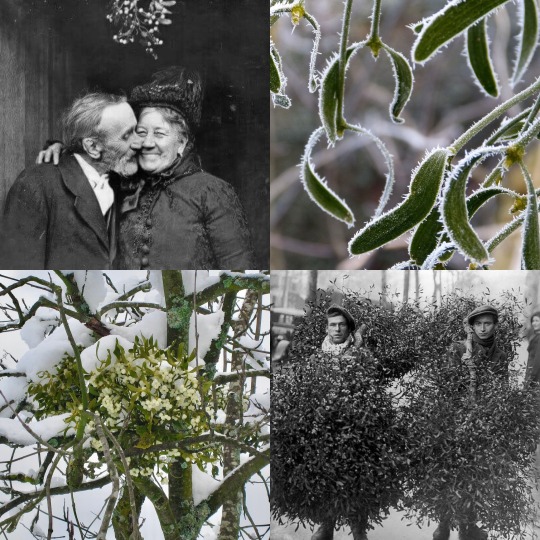
Kissing under mistletoe is believed to be Scandinavian in origin —that those who kissed under it were supposed to have a true and enduring love. This superstition ended up twisted by pervy Englishmen into a tradition of “a woman can’t refuse a kiss under the mistletoe or bad luck will befall her.” As the kissing superstition is fairly recent and largely invented —feel free to ignore it.
Mistletoe was once believed to be an antidote to all poisons and diseases. We know that’s not the case today but it does have historical traditional uses of treating arthritis, high blood pressure, respiratory issues, epilepsy, and infertility. While the plant itself has not been shown to help with cancer, some of its extracted and concentrated toxins have been found to be cytotoxic (destroys cancer cells).
Like the Native American snowberry (see previous post), mistletoe is also traditionally used to protect the cradles and beds of babies and small children. It can supposedly protect adults too when placed in the bedroom. Its presence is supposed to provide a good sleep with happy dreams.
If you have a bit of time, it’s quite a fun herb to research and maybe you’ll discover a native species growing in your region!
Resources: Wikipedia, Cunningham’s Encyclopedia of Magical Herbs, Folklore & Symbolism of Flowers, Plants and Trees, and The Folklore of Plants (Thiselton Dyer, 1889).
#bane folk#poisonous plants#poison path#mistletoe#viscum album#christmas botanicals#christmas plants#plant folklore#ethnobotany
57 notes
·
View notes
Note
Do you have any idea why LBJ was the only president who Queen Elizabeth never met during her reign?
We just don't know! Even the @lbjlibrary has previously stated that they simply don't know why LBJ and the Queen never met.
It seems to be a quirk of bad timing -- or, really, several instances of bad timing. They almost certainly would have met if there happened to be any major state funerals in the United States or UK during when they were both serving as head of state. And two of the biggest state funerals of the 20th Century actually happened during that time -- President John F. Kennedy's in November 1963 and former Prime Minister Winston Churchill's in January 1965. But Queen Elizabeth II was pregnant with Prince Edward at the time of JFK's funeral and unable to attend. At the time of Churchill's funeral, LBJ was suffering from a really bad respiratory infection that had required him to be hospitalized the day before Churchill died. According to LBJ, White House doctors strongly advised that he not fly anywhere while recovering from his illness, so he did not attend Churchill's funeral -- and was heavily criticized for not doing so by the British and American press.
The Queen did not visit the United States while LBJ was President, and President Johnson didn't visit the United Kingdom during his term, so they just kind of missed each other. They corresponded and there was no known personal or political reason that they never met. LBJ and Lady Bird actually hosted a fancy dinner at the White House in 1965 for the Queen's sister, Princess Margaret, and Margaret's husband, the Earl of Snowdon.
LBJ also didn't meet the Queen during his time as Vice President. Elizabeth II did not visit the United States at all during the Kennedy Administration, and President Kennedy's meeting with the Queen took place during a formal state dinner at Buckingham Palace in 1961, which the Vice President wouldn't have traveled to attend.
Interestingly, there is one possible time where LBJ and Queen Elizabeth II actually might have crossed paths, but there's no solid answer about it either way. In October 1957, the Queen visited the United States for several days and a state dinner was held in her honor at the White House by President Eisenhower. At the time, LBJ was the Senate Majority Leader -- arguably the second most powerful person in the United States. The LBJ Library has said that then-Senator Johnson was invited to the state dinner, accepted the invitation, and that the state dinner is on the schedule in his datebook from the time. However, unusually, there is no evidence that LBJ actually attended the state dinner. The LBJ Library says that it seems likely that he would have attended the dinner, but they've never been able to confirm it and, if he did attend, whether or not he met the Queen. But it seems likely that he would have at least been introduced to her if he attended the dinner considering his prominent position in Congress during the Eisenhower Administration. Again, we just don't know for sure.
Eventually, Lady Bird Johnson finally did meet the Queen, but it was 18 years after LBJ's death. In May 1991, Queen Elizabeth II and Prince Philip visited the United States and, while they were in Austin, Texas, they took a trip to the @lbjlibrary where they met Lady Bird and the Johnson daughters.
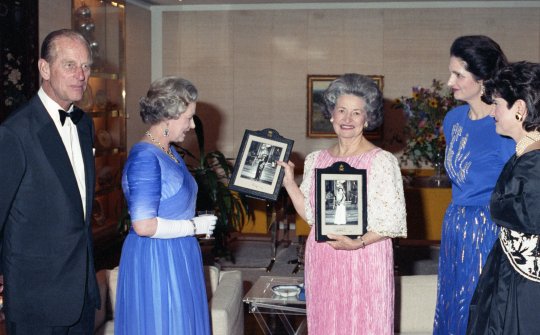
#History#Presidents and Queen Elizabeth II#LBJ#Lyndon B. Johnson#Queen Elizabeth II#State Dinners#State Visits#Queen Elizabeth#Presidents#President Johnson#White House#LBJ Library#White House Historical Association#Lady Bird Johnson#Princess Margaret#Death of Queen Elizabeth II#Johnson Administration#Lyndon Johnson#The Queen
51 notes
·
View notes
Text
Biden should support the UAW

On September 22, I'm (virtually) presenting at the DIG Festival in Modena, Italy. That night, I'll be in person at LA's Book Soup for the launch of Justin C Key's "The World Wasn’t Ready for You." On September 27, I'll be at Chevalier's Books in Los Angeles with Brian Merchant for a joint launch for my new book The Internet Con and his new book, Blood in the Machine.

The UAW are on strike against the Big Three automakers. Biden should be roaring his full-throated support for the strike. Doing so would be both just and shrewd. But instead, the White House is waffling…and if recent history is any indication, they might actually come out against the strike.
The Biden administration is a mix of appointees from the party's left Sanders/Warren wing, and the corporatist, "Third Way" wing associated with Clinton and Obama, which has been ascendant since the Reagan years. The neoliberal wing presided over NAFTA, the foreclosure crisis, charter schools and the bailout for the bankers – but not the people. They voted for the war in Iraq, supported NSA mass-surveillance, failed to use their majorities to codify abortion rights, and waved through mega-merger after mega-merger.
By contrast, the left wing of the party has consistently fought monopoly, war, spying, privatized education and elite impunity – but forever in the shadow of the triangulation wing, who hate the left far more than they hate Republicans. But with the Sanders campaign, the party's left became a force that the party could no longer ignore.
That led to the Biden administration's chimeric approach to key personnel. On the one hand, you have key positions being filled by ghouls who cheered on mass foreclosures under Obama:
https://pluralistic.net/2023/03/06/personnel-are-policy/#janice-eberly
And on the other, you have shrewd tacticians who are revolutionizing labor law enforcement in America, delivering real, material benefits for American workers:
https://pluralistic.net/2023/09/06/goons-ginks-and-company-finks/#if-blood-be-the-price-of-your-cursed-wealth
Progressives in the Biden administration have often delivered the goods, but they're all-too-often hamstrung by the corporate cheerleaders the party's right wing secured – think of Lina Khan losing her bid to block the Microsoft/Activision merger thanks to a Biden-appointed, big-money-loving judge:
https://pluralistic.net/2023/07/14/making-good-trouble/#the-peoples-champion
These self-immolating own-goals are especially visible when it comes to strikes. The Biden admin intervened to clobber railway workers, who were fighting some of the country's cruelest, most reckless monopolists, whose greed threatens the nation:
https://pluralistic.net/2023/02/11/dinah-wont-you-blow/#ecp
The White House didn't have the power to block the Teamsters threat of an historic strike against UPS, but it publicly sided with UPS bosses, fretting about "the economy" while the workers were trying to win a living wage and air conditioning for the roasting ovens they spend all day in.
Now, with the UAW on strike against the monopolistic auto-makers – who received repeated billions in public funds, gave their top execs massive raises, shipped jobs offshore, and used public money to lobby against transit and decarbonization – Biden is sitting on the sidelines, failing to champion the workers' cause.
Writing in his newsletter, labor reporter Hamilton Nolan makes the case that the White House should – must! – stand behind the autoworkers:
https://www.hamiltonnolan.com/p/whose-fault-is-it?
Nolan points out that workers who strike without the support of the government have historically lost their battles. When workers win labor fights, it's typically by first winning political ones, dragging the government to the table to back them. Biden's failure to support workers isn't "neutral" – it's siding with the bosses.
Today, union support is at historic highs not seen in generations. The hot labor summer wasn't a moment, it was a turning point. Backing labor isn't just the moral thing to do, it's also the right political move:
https://pluralistic.net/2023/09/14/prop-22-never-again/#norms-code-laws-markets
Biden is already partway there. He rejected the Clinton/Obama position that workers would have to vote for Democrats because "we are your only choice." Maybe he did that out of personal conviction, but it's also no longer politically possible for Democrats to turn out worker votes while screwing over workers.
The faux-populism of the Republicans' Trump wing has killed that strategy. As Naomi Klein writes in her new book Doppelganger, Steve Bannon's tactical genius is to zero in on the areas where Democrats have failed key blocks and offer faux-populist promises to deliver for those voters:
https://pluralistic.net/2023/09/05/not-that-naomi/#if-the-naomi-be-klein-youre-doing-just-fine
When Democrats fail to bat for workers, they don't just lose worker votes – they send voters to the Republicans. As Nolan writes, "working people know that the class war is real. They are living it. Make the Democratic Party the party that is theirs! Stop equivocating! Draw a line in the sand and stand on the right side of it and make that your message!"
The GOP and Democrats are "sorting themselves around the issue of inequality, because inequality is the issue that defines our time, and that fuels all the other issues that people perceive as a decline in the quality of their own lives." If the Democrats have a future, they need to be on the right side of that issue.
Biden should have allowed a railroad strike. He should have cheered the Teamsters. He should be on the side of the autoworkers. These aren't "isolated squabbles," they're "critical battles in the larger class war." Every union victory transfers funds from the ruling class to the working class, and erodes the power of the wealthy to corrupt our politics.
When Democrats have held legislative majorities, they've refused to use them to strengthen labor law to address inequality and the corruption it engenders. Striking workers are achieving the gains that Democrats couldn't or wouldn't take for themselves. As Nolan writes:
Democratic politicians should be sending the unions thank you notes when they undertake these hard strikes, because the unions are doing the work that the Democrats have failed to accomplish with legislation for the past half fucking century. Say thank you! Say you support the workers! They are striking because the one party that was responsible for ensuring that the rich didn’t take all the money away from the middle class has thoroughly and completely failed to do so.
Republican's can't win elections by fighting on the class war. Democrats should acknowledge that this is the defining issue of our day and lean into it.
Whose fault is a strike at the railroads, or at UPS, or in Hollywood, or at the auto companies? It is the fault of the greedy fuckers who took all the workers’ money for years and years. It is the fault of the executives and investors and corporate boards that treated the people who do the work like shit. When the workers, at great personal risk, strike to take back a measure of what is theirs, they are the right side. There is no winning the class war without accepting this premise.
Autoworkers' strikes have been rare for a half-century, but in their heyday, they Got Shit Done. Writing in The American Prospect, Harold Meyerson tells the tale of the 1945/46 GM strike:
https://prospect.org/labor/2023-09-18-uaw-strikes-built-american-middle-class/
In that strike, the UAW made history: they didn't just demand higher wages for workers, but they also demanded that GM finance these wages with lower profits, not higher prices. This demand was so popular that Harry Truman – hardly a socialist! – stepped in and demanded that GM turn over its books so he could determine whether they could afford to pay a living wage without hiking prices.
Truman released the figures proving that higher wages didn't have to come with higher prices. GM caved. Workers got their raise. Truman touched the "third rail of American capitalism" – co-determination, the idea that workers should have a say in how their employers ran their businesses.
Co-determination is common in other countries – notably Germany – but American capitalists are violently allergic to the idea. The GM strike of 45/6 didn't lead to co-determination, but it did effectively create the American middle-class. The UAW's contract included cost-of-living allowances, wage hikes that tracked gains in national productivity, health care and a defined-benefits pension.
These provisions were quickly replicated in contracts with other automakers, and then across the entire manufacturing sector. Non-union employers were pressured to match them in order to attract talent. The UAW strike of 45/6 set in motion the entire period of postwar prosperity.
As Meyerson points out, today's press coverage of the UAW strike of 2023 is full of hand-wringing about what a work-stoppage will do to the economy. This is short-sighted indeed: when the UAW prevails against the automakers, they will rescue both the economy and the Democratic party from the neo-feudal Gilded Age the country's ultrawealthy are creating around us:
https://doctorow.medium.com/the-end-of-the-road-to-serfdom-bfad6f3b35a9?sk=207d6afdb89b0351b92233cc3318ab94
There's a name for a political strategy that seeks to win votes by making voters' lives better – it's called "deliverism." It's the one thing the Trump Republican's won't and can't do – they can talk about bringing back jobs or making life better for American workers, but all they can deliver is cruelty to disfavored minorities and tax-breaks for the ultra-rich:
https://pluralistic.net/2023/07/10/thanks-obama/#triangulation
Deliverism is how the Democrats can win the commanding majorities to deliver the major transformations America and the world need to address the climate emergency and dismantle our new oligarchy. Letting the party's right wing dominate turns the Democrats into caffeine-free Republicans.
When the Dems allowed the Child Tax Credit to lapse – because Joe Manchin insisted that poor people would spend the money on drugs – they killed a program that had done more to lift Americans out of poverty than anything else. Today, American poverty is skyrocketing:
https://thehill.com/opinion/finance/4206837-poverty-made-an-alarming-jump-congress-could-have-stopped-it/
Four million children have fallen back into poverty since the Dems allowed the Child Tax Credit to lapse. The rate of child poverty in America has doubled over the past year.
The triangulators on the party's right insist that they are the adults in the room, realists who don't let sentiment interfere with good politics. They're lying. You don't get working parents to vote Democrat by letting their children starve.
America's workers can defeat its oligarchs. They did it before. Biden says he's a union man. It's time for him to prove it. He should be on TV every night, pounding a podium and demanding that the Big Three give in to their workers. If he doesn't, he's handing the country to Trump.



If you'd like an essay-formatted version of this post to read or share, here's a link to it on pluralistic.net, my surveillance-free, ad-free, tracker-free blog:
https://pluralistic.net/2023/09/18/co-determination/#now-make-me-do-it
#pluralistic#uaw#bidenomics#strikes#united autoworkers#labor#unions#union strong#evs#now make me do it#deliverism#democrats#hamilton nolan
116 notes
·
View notes
Text
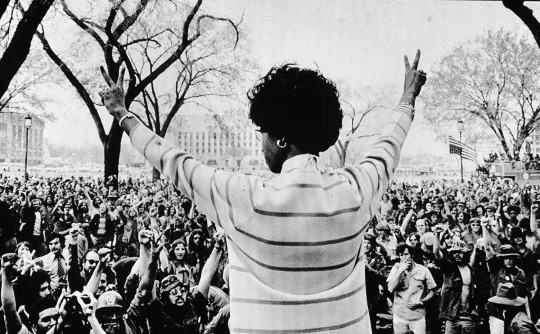
Black women have made important contributions to the United States throughout its history. However, they are not always recognized for their efforts, with some remaining anonymous and others becoming famous for their achievements. In the face of gender and racial bias, Black women have broken barriers, challenged the status quo, and fought for equal rights for all. The accomplishments of Black female historical figures in politics, science, the arts, and more continue to impact society.
Marian Anderson (Feb. 27, 1897–April 8, 1993)

Underwood Archives / Getty Images
Contralto Marian Anderson is considered one of the most important singers of the 20th century. Known for her impressive three-octave vocal range, she performed widely in the U.S. and Europe, beginning in the 1920s. She was invited to perform at the White House for President Franklin Roosevelt and First Lady Eleanor Roosevelt in 1936, the first African American so honored. Three years later, after the Daughters of the American Revolution refused to allow Anderson to sing at a Washington, D.C. gathering, the Roosevelts invited her to perform on the steps of the Lincon Memorial.
Anderson continued to sing professionally until the 1960s when she became involved in politics and civil rights issues. Among her many honors, Anderson received the Presidential Medal of Freedom in 1963 and a Grammy Lifetime Achievement Award in 1991.
Mary McLeod Bethune (July 10, 1875–May 18, 1955)
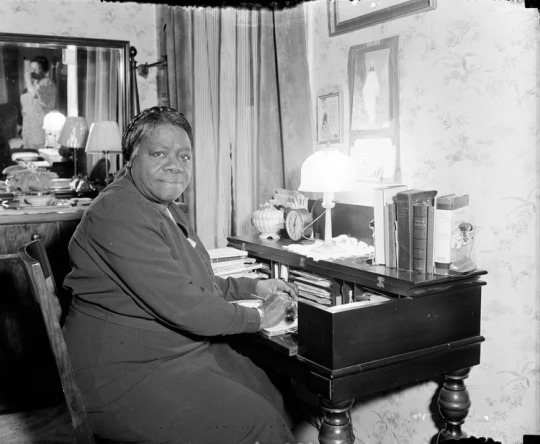
PhotoQuest / Getty Images
Mary McLeod Bethune was an African American educator and civil rights leader best known for her work co-founding the Bethune-Cookman University in Florida. Born into a sharecropping family in South Carolina, the young Bethune had a zest for learning from her earliest days. After stints teaching in Georgia, she and her husband moved to Florida and eventually settled in Jacksonville. There, she founded the Daytona Normal and Industrial Institute in 1904 to provide education for Black girls. It merged with the Cookman Institute for Men in 1923, and Bethune served as president for the next two decades.
A passionate philanthropist, Bethune also led civil rights organizations and advised Presidents Calvin Coolidge, Herbert Hoover, and Franklin Roosevelt on African American issues. In addition, President Harry Truman invited her to attend the founding convention of the United Nations; she was the only African American delegate to attend.
Shirley Chisholm (Nov. 30, 1924–Jan. 1, 2005)
Don Hogan Charles / Getty Images
Shirley Chisholm is best known for her 1972 bid to win the Democratic presidential nomination; she was the first Black woman to make this attempt in a major political party. However, she had been active in state and national politics for more than a decade and had represented parts of Brooklyn in the New York State Assembly from 1965 to 1968. She became the first Black woman to serve in Congress in 1968. During her tenure, she co-founded the Congressional Black Caucus. Chisholm left Washington in 1983 and devoted the rest of her life to civil rights and women's issues.
Althea Gibson (Aug. 25, 1927–Sept. 28, 2003)

Reg Speller / Getty Images
Althea Gibson started playing tennis as a child in New York City, winning her first tennis tournament at age 15. She dominated the American Tennis Association circuit, reserved for Black players, for more than a decade. In 1950, Gibson broke the tennis color barrier at Forest Hills Country Club (site of the U.S. Open); the following year, she became the first African American to play at Wimbledon in Great Britain. Gibson continued to excel at the sport, winning both amateur and professional titles through the early 1960s.
Dorothy Height (March 24, 1912–April 20, 2010)

Chip Somodevilla / Getty Images
Dorothy Height has been described as the godmother of the women's movement because of her work for gender equality. For four decades, she led the National Council of Negro Women (NCNW )and was a leading figure in the 1963 March on Washington. Height began her career as an educator in New York City, where her work caught the attention of Eleanor Roosevelt. Beginning in 1957, she led the NCNW and also advised the Young Women's Christian Association (YWCA). She received the Presidential Medal of Freedom in 1994.
Rosa Parks (Feb. 4, 1913–Oct. 24, 2005)
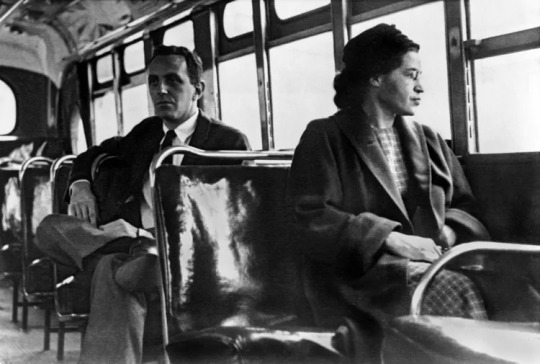
Underwood Archives / Getty Images
Rosa Parks became active in the Alabama civil rights movement after marrying activist Raymond Parks in 1932. She joined the Montgomery, Alabama, chapter of the National Association for the Advancement of Colored People (NAACP) in 1943 and was involved in much of the planning that went into the famous bus boycott that began the following decade. Parks is best known for her December 1, 1955, arrest for refusing to give up her bus seat to a White rider. That incident sparked the 381-day Montgomery Bus Boycott, which eventually desegregated that city's public transit. Parks and her family moved to Detroit in 1957, and she remained active in civil rights until her death.
Augusta Savage (Feb. 29, 1892–March 26, 1962)
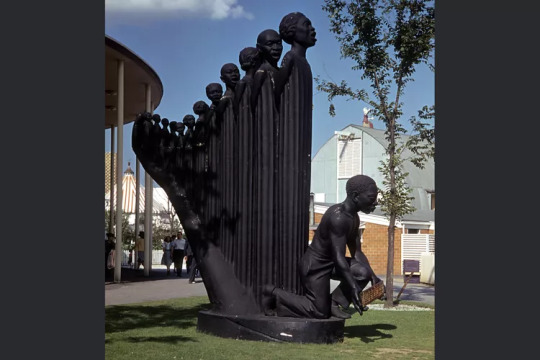
Archive Photos / Sherman Oaks Antique Mall / Getty Images
Augusta Savage displayed an artistic aptitude from her youngest days. Encouraged to develop her talent, she enrolled in New York City's Cooper Union to study art. She earned her first commission, a sculpture of civil rights leader W.E.B. Du Bois, from the New York library system in 1921, and several other commissions followed. Despite meager resources, she continued working through the Great Depression, making sculptures of several notable Black people, including Frederick Douglass and W. C. Handy. Her best-known work, "The Harp," was featured at the 1939 World's Fair in New York, but it was destroyed after the fair ended.
Harriet Tubman (1822–March 20, 1913)

Library of Congress
Enslaved from birth in Maryland, Harriet Tubman escaped to freedom in 1849. The year after she arrived in Philadelphia, Tubman returned to Maryland to free her family members. Over the next 12 years, she returned nearly 20 times, helping more than 300 enslaved Black people escape bondage by ushering them along the Underground Railroad. The "railroad" was the nickname for a secret route that enslaved Black people used to flee the South for anti-slavery states in the North and to Canada. During the Civil War, Tubman worked as a nurse, a scout, and a spy for Union forces. After the war, she worked to establish schools for formerly enslaved people in South Carolina. In her later years, Tubman also became involved in women's rights causes.
Phillis Wheatley (May 8, 1753–Dec. 5, 1784)

Culture Club/Hulton Archive/Getty Images
Born in Africa, Phillis Wheatley came to the U.S. at age 8, when she was captured and sold into enslavement. John Wheatley, the Boston man who enslaved her, was impressed by Phillis' intellect and interest in learning, and he and his wife taught her to read and write. The Wheatleys allowed Phillis time to pursue her studies, which led her to develop an interest in poetry writing. A poem she published in 1767 earned her much acclaim. Six years later, her first volume of poems was published in London, and she became known in both the U.S. and the United Kingdom. The Revolutionary War disrupted Wheatley's writing, however, and she was not widely published after it ended.
Charlotte Ray (Jan. 13, 1850–Jan. 4, 1911)
Charlotte Ray has the distinction of being the first African American woman lawyer in the United States and the first woman admitted to the bar in the District of Columbia. Her father, active in New York City's Black community, made sure his young daughter was well educated; she received her law degree from Howard University in 1872 and was admitted to the Washington, D.C., bar shortly afterward. Both her race and gender proved to be obstacles in her professional career, and she eventually became a teacher in New York City instead.
#10 of the Most Important Black Women in U.S. History#Black Women#Black Women Matter#Black Lives Matter#us history
214 notes
·
View notes
Text
Legend VS LMK Characters:
Kui Mulang (LMK):
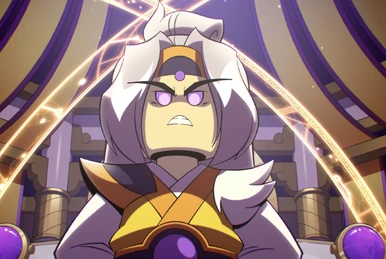
[Kaui Mulang, Guard of the Celestial Court, Mansion of the White Tiger, Devourer of Earthly Souls]
Korean: Gyumokrang Mandarin: The Wood Wolf of Legs
Former Celestial Guard turned Yellow-Robed Demon.
After Falling in Love with Jade Maiden and having their love rejected by the Celestial Realm. He gave up their immortality and he awaited for her to reincarnate. As he waits to make sure he will be there to see her he consumes mortal lives to longavit his own.
The 28 Mansions mentioned by him are part of the Chinese constellation system as to why there is so much star imagery is in his castle.

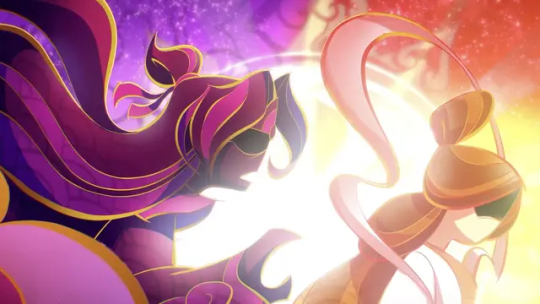

Kui Mulang (Ledgend):
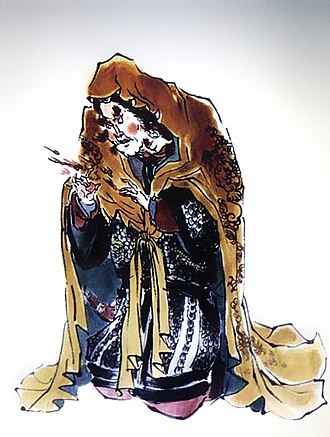
Kui Mulang originated from the ancient Chinese worship of the constellations, a spiritual practice that combines Chinese mythology and astronomy. He is considered to be one of the 28 Mansions, which are Chinese constellations. These are the same as those studied in Western astrology.
He appears in Chinese mythology literate notably the JTTW & Fengshen Yanyi.
He is linked to a historical figure called Ma Wu, a general who hailed from the town of Huyang in Tanghe, located in the Henan province.

Kui Mulang is associated with the constellation Andromeda, which appears in the sky in the middle of November. In this constellation is Kui Xiu, described as the "four-legged fish palace" of Heshansu (和善宿) because its shape is similar to a fish. Another constellation, the White Tiger, is also associated with this cluster of stars.

According to the novel Investiture of the Gods (Fengshen Yanyi), Kui Mulang was originally named Li Xiong. After he died in the Battle of the Ten Thousand Immortals, Jiang Ziya deified him as the Wood Wolf of Legs, one of the twenty-eight stars.
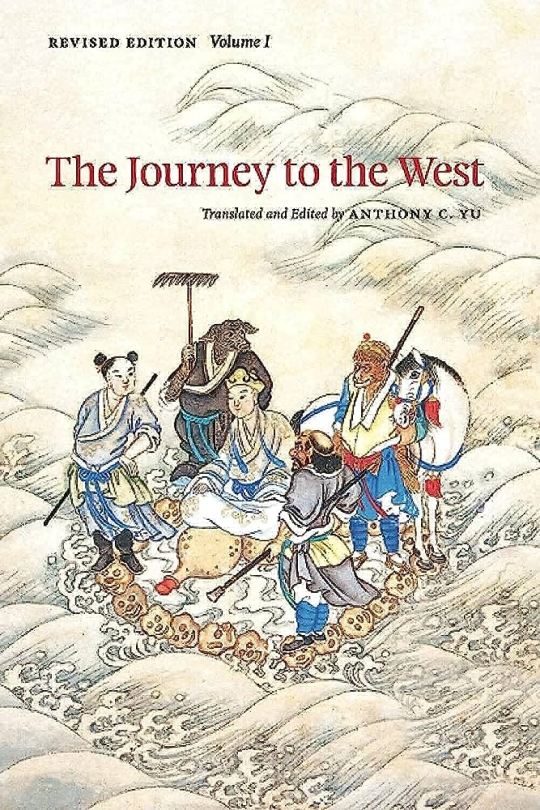
In JTTW
Kui Mulang appears as a demon named Yellow Robe Demon . He lives the Moon Waves Cave on Bowl Mountain in the Kingdom of Baoxiang. In his past, the Yellow Robe Demon falls in love with the Jade Maiden in Heaven and decides to elope with her. He becomes a demon lord and the maiden is reincarnated from a goddess to a human who is named Baihuaxiu . She is the third princess of the Kingdom of Baoxiang. The demon then kidnaps the princess, though she has no memory of her existence as a Jade Maiden. He marries her and the couple has two children.
Sun Wukong manages to defeat the demon, which mysteriously vanishes after his defeat. Wukong then seeks help from Heaven to track down the demon and learn his true identity. The Jade Emperor discovers that one of the 28 Mansions is missing, so he orders the remaining 27 to subdue the demon. The demon is revealed to be a disguised as Revatī, the Wood Wolf of Legs, a star deity in the heavenly court, and one of the 28 Mansions. The Wood Wolf is then subdued and brought back to Heaven. As punishment, he is ordered to become a furnace keeper under Taishang Laojun.
Jade Maiden:
Considering she is a huge part of Kui Mulang's life I thought maybe also some info about her as well.

[ Yunü / Jade Girl or Jade Maiden]
Yunü is a common designation for a beautiful woman or, in Daoism, for a fairy or immortal
A Taoist deity or goddess in Chinese mythology and Chinese traditional religion who, along with her male counterpart Jintong (Golden Boy), are favored servants of the Jade Emperor and Zhenwudadi.
They are also believed to serve as guides in the underworld and the protectors of houses and temples. Some of the Golden Boy and Jade Girl pair could be found on some graves at Bukit Brown Cemetery as they are believed to serve as guides in the Spirit World or the Underworld.
During the spring festival, pictures featuring the two can be found on the doors of many households.
This couple helps virtuous souls over a golden bridge to paradise and helps souls whose good deeds outweighed the bad, over a silver bridge to paradise. Therefore by erecting the Golden Boy and Jade Maiden by the grave of the deceased, living family members hope that the deceased will not venture into the courts of hell but instead lead their afterlife in paradise.
Yunü and Jintong have appeared in several stories since the Song and Yuan dynasties and have become important figures in Chinese mythology.
There are several mountain peaks bearing her name.
In Journey to the West, Yunü is a servant maid of the Jade Emperor in Heaven. She falls in love with a star god called Kui Mulang and decides to elope with him. However, she doesn't want to ruin Heaven's pureness, so she decides to reincarnate as a human. She enters the human world as Baihuaxiu, the third princess of the Kingdom of Baoxiang.
In Other Literature:
Specific examples are the southern opera version of the legend, Jintong and Yunü, In this context, Yunü is called Longnü and Jintong is called Shancai Tongzi. According to the Shenyijing, Yunü and her companions loved to play touhu, a Chinese game in which arrows or darts are thrown into a vase.
In the Avatamsaka Sutra, she and Jintong seek enlightenment and are acolytes of Guan Yin. In this context, Yunü is called Longnü and Jintong is called Shancai Tongzi.
Some folktales say that Xue Dingshan and Fan Lihua were originally the Golden Boy and Jade Girl. The Jade Emperor was furious with them and wanted to punish them for breaking the celestial utensils. Fortunately, the Old Man of the South Pole begged for their mercy and was demoted to the mortal world.
In the Hanyi ji play, the protagonists Qi Liang and Meng Jiang are reincarnations of Jintong and Yunü.
In most popular versions of The Butterfly Lovers, the protagonists Liang Shanbo and Zhu Yingtai are human reincarnations of Jintong and Yunü who are expelled from Heaven Court by Guanyin or the Jade Emperor for their sin and forced to live as a thwarted couple for three or seven generations before being reunited and restored to their original status.
Thoughts:
Yunü has a lot of love and being kicked/leaving heaven tales.
But did love she was more than just known for this story alone.
The JTTW and LMK versions of Kui Mulang are not too different. However, in the retelling of their love tale he only mentioned himself ridding them of their immortality it almost sounded like in that tale she might have had second thoughts and he did it by force. But I hope not but we can never know because the LMK changed a lot of the characters and tweaked some backstories.
I think the real change in the LMK is that Kui Mulang captured Ao Lie before the JTTW. From the way he talked about the Jade Maiden, she had not been reincarnated or at least he had not captured her yet. For Ao Lie It had to be after his banishment of course because he talked about his powers causing damage he felt bad for aka when he burned his dad's stuff.
Well, I hope you, readers enjoyed:)
#lego monkie kid#jttw#lmk#fan thoughts#journey to the west#lego monkey kid theory#character study#kui mulang#jade maiden#chinese mythology
116 notes
·
View notes
Text
I was casually looking up animal crossing villagers today, and suddenly I found myself obsessed with Chief the Wolf.

Looking at him, you'd think hes from the oldest money imaginable and has strong feelings about who should be allowed to join his country club, but he lives in an alleyway and sleeps on a pile of cardboard boxes????

His house in the very first game was also a dump, but it appears to be in some sort of warehouse and he had an actual bed (and a troubling fixation on clocks)

So he was living in poverty right from the start of the franchise, and the progression of the state of his house implies that he hit rock bottom and then kept going down.
However, his clothing is undeniably preppy and not the style you would normally associate with homeless people, so i can only imagine that he came from a wealthy family and fell out with them somehow. Now he eeks a life on the streets while retaining the vanity of a rich man.
This begs the question; what did he do?

This is Chief's pre-New Horizon look. Everyone got an updated wardrobe in NH compared to older games, so no surprise that he dresses differently, but he has an unmistakable different colouring as well that's quite dramatic when you compare them. His fur in earlier games is darker orange with brown highlights, while his current fur is yellow with orange highlights. His white markings on his paws are also longer compared to his older model, and Cheif has dark green eyes in his new model, while his original design had pure black eyes.
Is this a simple result of the updated graphics? Or is it actually a sign of something more insidious?
Because you see, all AC villagers have their own dreams and backstories and stuff. And Chief mentions on April Fools day during Animal Crossing New Leaf that he has an unnamed TWIN BROTHER.
What if the older chief with dark orange fur is not the Chief in New Horizons? Even unidentical twins can strongly resemble each other, and differences in colouring is not uncommon.
What if the falling out with OG Chief's original family included his brother, or may even have been caused by his brother? Twins and matters of inheiritance have never historically mixed well.
Maybe OG Chief worked his way back into his parents good graces and threw his brother under the bus as way of revenge, and now New Chief, once the favourite son, is the one homeless and destitute?
#animal crossing#animal crossing new horizons#animal crossing new leaf#cheif the wolf#answer my calls nintendo
60 notes
·
View notes